In little more than a week in May 2021, Arab rioters set ablaze 10 synagogues and 112 Jewish residences, looted 386 Jewish homes and damaged another 673, and set 849 Jewish cars on fire. There were also 5,018 recorded instances of Jews being stoned. Three Jews were murdered and more than 600 were hurt. Over 300 police officers were injured in disturbances in over 90 locations across the country. Israel, argues, Russell Shalev, is not facing up to these numbers or their baleful implications for Jewish-Arab relations. The editors welcome debate on this issue and will publish other perspectives in the future.
Almost a year after the May 2021 Arab riots, Israeli-Arab terrorists radicalised by ISIS have murdered six Israeli citizens in two separate attacks in Beer Sheva and Hadera in one week. Last Tuesday, a Bedouin Israeli stabbed, rammed and murdered four Israeli citizens in Beer Sheva. Yesterday, two Arab citizens from Um al-Fahm opened fire on Border Police officers in Hadera. These attacks and the growing radicalization of Israel’s Arab population should come as no surprise to anyone who looks at May 2021’s Arab uprising.
The May 2021 Arab riots may be a historical turning point in the relations between Israeli Jews and the Arab minority. Throughout the country, thousands of Israel’s Arab citizens violently attacked Jewish institutions and property, symbols of Israeli sovereignty and Jewish civilians. This violent uprising happened as Israel fought an external war against the Hamas terrorist organisation in Gaza. The intensity and scope of the Arab uprising was unprecedented in recent decades, if not since the founding of Israel in 1948. For many Israeli Jews, the fact that masses of Arab Israeli citizens expressed open support for, and actively aided Israel’s enemies during wartime shattered an illusion of growing coexistence between Jews and Arabs.
Ten months later, the fear of another, bloodier round of Arab citizens opening up an internal front during wartime refuses to be swept under the rug. However, it seems that many in Israel, especially among the Israeli left, refuse to acknowledge that the May 2021 riots were an Arab nationalist revolt against the State of Israel. While civil issues such as discrimination or economic disparities may have had a secondary role in Arab anger, the cries that accompanied the rioters were ‘With fire and blood, we shall redeem Palestine’ and ‘slaughter the Jews’. No sovereign state can tolerate a hostile and violent irredentist movement within its borders. This article examines why the May riots should have been a wake-up call to Israeli society and why, so far, they have not been.
The Disinformation Campaign
In a recent piece in the English language +972 magazine and its Hebrew equivalent Local Call, Meron Rapoport characterised the ongoing interest in the May 2021 riots as ‘the Israeli right’s renewed war on Palestinian citizens’. In this telling, following the failure to annex areas of Judea and Samaria as part of President Trump’s ‘Deal of the Century’, the Israeli right has turned to a new enemy to harass and oppress: Israel’s Arab citizens. According to Rapoport, Israel’s Arab citizens have made important advances in terms of economics, education and political achievements, threatening the Jewish dominance upheld by the Israeli right. To counteract these civil achievements, the Israeli right has latched on to the May riots to beat down Israeli Arabs. Writes Rapoport:
There is little doubt that the right has used the violence of both Arab and Jewish rioters in the so-called mixed cities of Lydd, Ramle, Acre, and Jaffa to present all of Israel’s Palestinian citizens as ‘the enemy within.’ In this sense, the aim of the Zionist fundamentalists is as blatant as it is straightforward: to instigate violence between Arabs and Jews within Israel proper, or, more precisely, to instigate conflict between the state and its oppression mechanisms on one hand (especially the army and police), and its Arab citizens on the other — not remotely metaphorically, but in the very immediate, physical sense.
In this ahistorical retelling, Israeli Arabs are passive victims while ‘Zionist fundamentalists’ (a euphemism for mainstream Israelis) are the culprits. À la Rapaport, the dozens of synagogues torched in Lod, Jaffa Arabs cracking the skull of an IDF soldier, assaults on Jewish schoolchildren in Akko, and Bedouins setting up roadblocks along a major highway to lynch Jews are all besides the point. Arabs have no agency – the story here is Israeli (i.e. Jewish) racism.
Another attempt to rewrite May’s events and shoehorn them into the cookie-cutter story of Israeli racism and Arab innocence can be found in the recent booklet released by the Van Leer Jerusalem Institute entitled ‘Fire in a Field of Thorns: Essays on Violence and Solidarity‘. In the aftermath of the riots, the Van Leer Institute organised a roundtable of left-wing and anti-Zionist activists and figures to analyse the events from ‘a critical perspective’. The booklet suffers from the usual impenetrable academic jargon and buzzwords, such as ‘structural-cum-symbolic amplification’, ‘anarchisation’ and ‘overdomination’. However, the message is sympathetic. One essay refers to the violence as ‘a pastime for enraged youth‘, while another lauds the ‘return of the Palestinian spirit‘. The writers point to the usual culprits of gentrification, the breakdown of the peace process, economic disparities between Jews and Arabs and the entry of religious Jews (Garinim Toranim) into mixed cities. Even when irredentist nationalism is acknowledged, it is done in positive terms as a form of ‘resistance’.
The dismissal of the nationalist motivations of May’s riots are not confined to the far-left. The centrist Institute for National Security Studies has warned that categorising Israeli Arab violence as ‘an internal intifada’ or a security threat is inaccurate and may lead to greater hostility towards Israeli Arabs. The authors of a recent report lay the blame on Arab criminal gangs, coupled with widespread frustration with discrimination and lack of economic opportunities.
These soft or sympathetic attitudes towards the perpetrators of May’s riots have even penetrated parts of the Israeli judicial system. Ten months after the events, the first sentences are being handed out. On 24 February, the Supreme Court handed down its first sentence on an appeal by the prosecution against the light sentence handed to one of the rioters involved in the riots that led to the burning of the Effendi hotel in Akko. This appeal is the first Supreme Court judgment on the sentences for the May rioters and will establish the scope of future sentences. While the Supreme Court ruled that the original sentence of 12 months was too light, the Court’s stricter sentence of 22 months still amounts to little more than a slap on the wrist.
The Haifa District Court sentenced Muhamad Aswad to twelve months in prison, despite the prosecution’s demand for five to eight years. Aswad took part in the riots that led to the torching of the Effendi hotel, while it was occupied by dozens of workers and guests. The hotel was targeted because it is under Jewish ownership. Despite efforts to evacuate the hotel, acclaimed Israeli aerospace scientist Avi Har-Even, 85, succumbed to his wounds after being trapped in the burning building. As Aswad’s lawyer described him, he’s ‘a young man, from a marginalized family, with a clean slate being judged for the first time.’ The light sentence, along with the court’s approach to the events as mere criminality, bode badly for any honest reckoning with the motivations and mind-set of the Arab rioters.
Israel’s Homefront
While this article will not go over the main events of the May riots (see my essay, ‘Israel’s Homegrown Intifada’) it is worthwhile to remind ourselves of the magnitude of the Arab uprising. After the violence died down, the Central District Fire Station released statistics showing the scale of the damage. In little more than a week, Arab rioters set 10 synagogues and 112 Jewish residences on fire, looted 386 Jewish homes and damaged another 673, and set 849 Jewish cars on fire. There were also 5,018 recorded instances of Jews being stoned. Three Jews were murdered and more than 600 were hurt. Over 300 police officers were injured in disturbances in over 90 locations across the country.
By contrast, although some commentators have push the ‘both sides’ line, no mosques were damaged, one Arab home was firebombed (by Arabs that mistook it for a Jewish home), 13 Arab homes and cars were damaged, and 41 Arab bystanders were hurt by hurled stones. There were also two attacks by Jewish extremists against Arab bystanders, in Bat Yam and Herzliya. Bat Yam saw a large and violent demonstration by far-right Jews.
While certainly inequality and civil issues contributed to the explosion of the violence, the uprising should be understood as a continuation of the century long Palestinian struggle against Jewish sovereignty in Israel. Many Arab citizens of Israel, although certainly not all, see themselves as part of the Palestinian people. They fully believe the Palestinian narrative that holds that Jews are foreign colonists and occupiers in Palestine, that Israel is a temporary phenomenon and that ultimately, the Palestinians will succeed in liberating Palestine and forcing Jews back to their home countries.
According to statistics published by Professor Sammy Smooha of Haifa University, 77.1 per cent of Israeli Arabs view Zionism as a colonial and racist movement, and demand that Israel be replaced with a binational state. 70.5 per cent of Israeli Arabs demand the right of return of Palestinian refugees, a move that would turn Israeli Jews into a minority. According to a 2017 study carried out by Smooha, Arab-Jewish relations have deteriorated since the previous survey done in 2015. In 2017, only 58.7 per cent of Israeli Arabs recognized Israel’s right to exist, as opposed to 65.8 per cent in 2015. In 2017, 44.6 per cent accepted Israel’s legitimacy as a Jewish state as opposed to 60.3 per cent in 2015. The acceptance of Israel retaining a Jewish majority declined from 42.7 per cent in 2015 to 36.2 per cent in 2017. According to a 2019 survey carried out by Shacharit, two-thirds of those polled denied or were ambivalent regarding Jewish historical ties to Israel. While not all of these Arab citizens support violence against the state and its Jewish population, May’s riots demonstrate that there is a significant segment of Israeli Arabs willing to turn to violence. The perpetrators of this violence operate in a society that is to a large extent sympathetic or supportive of their goals, if not always their methods.
As described in detail in a recent report by the Jerusalem Center for Public Affairs (the full report is in Hebrew), three main movements are at play in the radicalisation of Israel’s Arab population. Over the past years, the Israeli government has invested tens of billions of shekels in the Arab sector to reduce the various gaps in standards of living. Simultaneously, there has been a steady increase in Arab participation in the Israeli economy and different aspects of Israeli society. Despite this, gaps between Jews and Arabs remain, especially in many of the mixed cities. Many Arab citizens still struggle with their place in Israeli democracy and reconciling their Arab, Palestinian and Israeli identities.
At the same time, there are powerful forces at work to promote Arab separatism and rejection of Israeli society. The Northern Branch of the Islamic Movement promotes an Islamic-based Arab identity and shares an ideological affinity with Hamas. The Northern Branch, nominally illegal, has been instrumental in spreading the libel that the ‘al-Aksa mosque is in danger’, a lie that has repeatedly led to bloodshed. Several leading religious figures in the Northern Branch played key roles in inciting Arabs to attack Jews, among them Sheikh Kamal Hatib, Sheikh Yussuf Al-Baz, the imam of the Lod mosque, and Sheikh Mahmud Ma’adi, the imam of the Al-Ramal mosque in Akko.
Second, the Balad movement, which is a secular Palestinian nationalist movement, participates in the political process with the explicit goal of eliminating Israel as a Jewish state. Its leaders and public figures reject the very existence of a Jewish people and are clear in denying any sort of historical connection between Jews and Israel. Finally, the ‘Sons of the Village’ movement, which is the affiliated with the Popular Front for the Liberation of Palestine terrorist-organisation, calls on Arab-Israelis to reject political participation in the Knesset and promotes a Palestinian nationalist identity. These ideological movements were crucial in laying the groundwork for violence of the May riots.
It is important to mention as well the parallel and contrary trend of greater Arab Israeli participation in the economy, academia and politics. The Covid-19 pandemic shined a light on the thousands of Arab doctors, nurses and medical staff that treat Israel’s sick. According to a 2019 survey conducted by Shacharit, over a third of Israel Arabs surveyed were characterised as ‘integrationist’. This group is comprised of religious, traditional and secular Arabs, hold liberal values and tend to believe that they enjoy more opportunities than their parents’ or grandparent’s generals. They support integration in the police forces and other state institutions, and hold moderate views on the Israeli-Arab conflict.
Remembering the Nakba, Reversing 1948
Nadav Shragai, in the JCPA report, focuses on the growing place of the ‘Nakba’ on the self-consciousness of Israel’s Arab citizens and its role as a catalyst for the May riots. The Nakba, Arabic for ‘disaster’ refers to the catastrophe of Israel’s founding in 1948. Reacting to the 1947 UN Partition Plan, Palestine’s Arabs launched an all-out attack on the Jewish yishuv. They were reinforced by seven Arab invading armies in response to Israel’s Declaration of Independence in May 1948. As quotes and speeches by leading Arab figures demonstrate, the intensified Israeli Arab emphasis on the Nakba is not meant as a historical commemoration of the humanitarian suffering of Palestinian Arabs but rather signals an aspiration to reverse the Palestinian defeat in 1948.
In Yaffo, May’s riots were preceded by three Arabs assaulting Rabbi Eliyahu Mali, the director of the Shirat Moshe yeshiva, on 18 April, as he went to look for apartments to purchase for the yeshiva. This was the opening salvo in a series of attacks on security forces, public property and Jewish civilians. The narrative of ‘Nakba and Return’ can be seen in how Jaffa Arab figures explained the tensions. In an interview on Israeli news, the chairman of the Southern Branch of the Islamic Movement in Yaffo, Muhammad Mahmid, mentioned ‘the cities that you caused their inhabitants to abandon and become refugees’. He mentioned that Yaffo’s Arab citizens fear a new ‘Nakba’ and promised that ‘in order to guarantee my existence in Yaffo … I’ll protect it at any cost necessary.’
Lod, a mixed city in Israel’s center, saw some of the worst rioting. A key figure in the incitement and radicalisation of Lod’s Arabs is the previously mentioned Sheikh Yussuf Al-Baz. In widely influential speeches he claims that Israel’s existence is illegitimate and the Jewish presence in Palestine is merely temporary. In a sermon given in Lod’s main mosque, he said: ‘You [the Jews] will leave this land. The times won’t stay as they are. The powerful won’t remain powerful. The weak won’t remain weak. The coming days will bring change. The wheel will turn against you.’ During the riots in Lod, Arabs torn down the Israeli flag in the main square and replaced it with a Palestinian flag, a symbolic representation of the Sheikh’s words.
In November 2021, the chairman of the Coordinating Committee of Israeli Arabs and former Knesset Member, Mohammad Barakeh, explicitly tied May’s riots to the wider Palestinian struggle and the goal of liberating Palestine. Speaking to Palestinian television, he said:
Jerusalem has some dear sisters: Jaffa, Haifa, Acre, Lod, and Ramla. Just a few months ago, last May, at the time of the last Intifada – look at the center of the confrontation with the Zionist oppression forces. It was particularly in these cities – the cities that they tried to write off, to distort their image, and erase them from the map of Palestine – these cities rose up and said: ‘Palestine is here, it was called Palestine in the past, and it is called Palestine once again.’
At the same time, Mansour Abbas and his Ra’am party may signify a contrast to this separatist trend in Israeli Arab society. Although Ra’am is an Islamic party, it was first courted by Benjamin Netanyahu during the 2019 election season. In the aftermath of the violence in Lod, Abbas visited a burnt down synagogue and condemned the violence. Standing in the charred remains of Beit Yisrael synagogue, he said ‘Targeting holy sites is forbidden and whoever does it, goes against the teachings of Islam. There is no room to tolerate this, the same as we cannot accept harming our mosques. The red line is violence of any kind. We must look forward and start rebuilding our holy sites and our relations.’
When the Bennett-Lapid government was formed in June, Ra’am made history by being the first Arab party to serve in the coalition. It is still too early to know whether Ra’am represents a true change in Israeli Arab politics. Some commentators point to Abbas’ statements that Ra’am will focus on civil issue for its Arab constituents, as opposed to foreign (Palestinian) issues, as well as his statement recognising Israel as a Jewish state. Others argue for a more cautious approach, keeping in mind Ra’am’s Muslim Brotherhood origins and many hostile statements made by Ra’am politicians, religious figures and opinions leaders.
All in the Family
Another aspect of violence that has been largely overlooked is the role of Palestinian immigrants and their descendants in fermenting nationalist unrest. In recent months, Israel’s Citizenship Law, which would prevent or limit the ability of Palestinians in Judea, Samaria and Gaza to gain Israeli citizenship through marriage, has been discussed in the Israeli and foreign media. The family reunification policy was ended between 2003 and 2022, yet the original law expired due to coalition politics. A stronger version of the law was passed in March 2022. Many on the Israeli left, as well as detractors of Israel, have pointed to the law as evidence of Israeli discrimination and racism against its Arab citizens.
The Israeli security establishment has long supported the law and warned of the security threat posed by Palestinians gaining Israeli citizenship. Recently, the Israel Security Agency (Shabak) wrote to Interior Minister Ayelet Shaked calling on the government to end family reunification, pointing out that 40 per cent of the Bedouins involved in recent disturbances in the Negev are first or second generation descendants of Palestinian spouses. Similarly, the Shabak has warned that Hamas is actively looking to recruit children of Palestinian spouses for terror activities.
According to new statistics collected, Palestinian-Israelis played a disproportionate role in the May riots. ‘Israel’s Cities’ (Arei Yisrael), a civil society organisation established in the wake of the violence dedicated to strengthening mixed cities, went over the list of over 120 Arabs arrested or charged in Lod and Ramle with violent acts in May. Over 60 per cent of those arrested on suspicion of harming Jews or security forces are related to Palestinians that came to Israel through family reunification. In terms of those actually charged, the percentage rises to 63 per cent.
It must be remembered that those who have been arrested or charged only reflect a small number of the actual participants in the riots. The overwhelming majority of those involved have not been identified or there is not enough evidence against them for a charge. While focusing on the number of Palestinian citizens of Israel directly involved in the riots, we should not forget the wider effects of Palestinian immigration on the radicalisation and nationalist unrest among Israeli Arabs.
In Lod, Arab gangs blocked main thoroughfares throughout the city, looking for Jews to beat and lynch. One victim of Arab violence was Yigal Yehoshua, a 56-year-old who was stoned to death in his car. Three of those charged are children of Palestinian immigrants. Two are the sons of an Arab-Israeli man married to a Palestinian woman, while a third is the son of a Palestinian mother.
Israeli journalist Kalman Liebiskind has highlighted many examples of this phenomenon. In Lod, two Arab residents fired bullets at a Magen David Adom volunteer. One resident is the son of a Palestinian woman, while the second is the son of a man married to a Palestinian woman. In another incident, three residents of Ramle, sons of Palestinian parents from Judea and Samaria, were indicted with conspiring to commit crimes related to acts of terror, arson, and possession of weapons. They were charged after having made 15 Molotov cocktails and burning municipal playgrounds.
It is estimated that 140,000 spouses gained citizenship in the decade before the original 2003 law banning reunification was passed. Some children of Palestinian spouses continue to be connected to the anti-Israel messages coming from Palestinian society. They maintain family ties with relatives in the Palestinian territories, strengthening their Palestinian identity. The percentage of descendants of family reunification is particularly high in mixed cities such as Lod, Ramle and Akko, making these cities into hotbeds of radical and subversive activity.
A Nationalist Insurgency
The May 2021 riots were not a civil protest, ‘a pastime’, or the Israeli version of the Black Lives Matter movement. They were an open assault on the State of Israel and its Jewish citizens during wartime. Tens of thousands of Israeli Arabs took to the streets and set out to harm and kill Jews. These rioters enjoy the sympathies of wide swaths of the Israel Arab population that reject Israel’s Jewish character. This was a nationalist insurgency aimed at the state’s very existence.
Security experts, such as military historian Dr. Yagil Henkin, have expressed fears that during the next round of fighting, Israeli Arabs may block major highways and seek to prevent troop movements. Others such as Maj. Gen. (res.) Gershon Hacohen warn that Arab criminal gangs, which largely kept out of May’s events, will point their guns at Jews in the future.
Israel’s Arab citizens have legitimate concerns over personal security, prejudice and gaps in living standards. They also have the right to expect equal access to opportunity and economic benefits as any citizen. However, no state can tolerate irredentist or violent separatist movements within their borders. May’s rioters were not protesting this or that Israeli policy – rather, they were opening another front in the wider Palestinian struggle against Israel while the country was under rocket fire from Hamas-controlled Gaza.
The struggle between Jewish determination to establish a state in the land of Israel and Arab opposition has lasted for over a century. In many ways, the events of May 2021 were a throwback to the Arab revolts of the 1920s-1940s that left hundreds of Jews dead. The first part of Israel’s War of Independence, following the 1947 UN Partition Plan vote, was actually a civil war between Jews and Arab in Israel. The May 2021 riots show that a significant portion of Israel’s Arab citizens seek to reverse their defeat in 1948 and ‘liberate Palestine’ at Israel’s expense.
Unless there is serious action to combat the radical ideologies spreading in Israel’s Arab sector, combined with greater attempts to integrate Arab citizens, there will certainly be another, bloodier insurgency in the future.

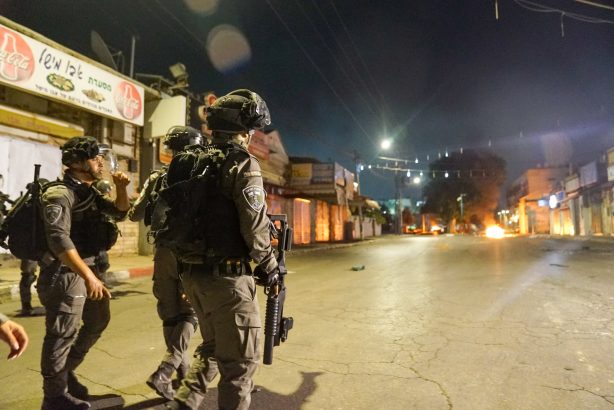

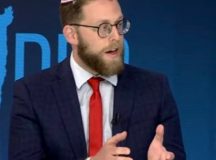
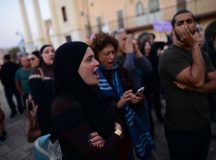
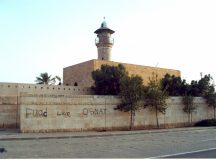
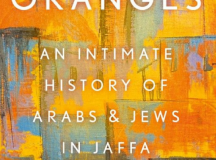





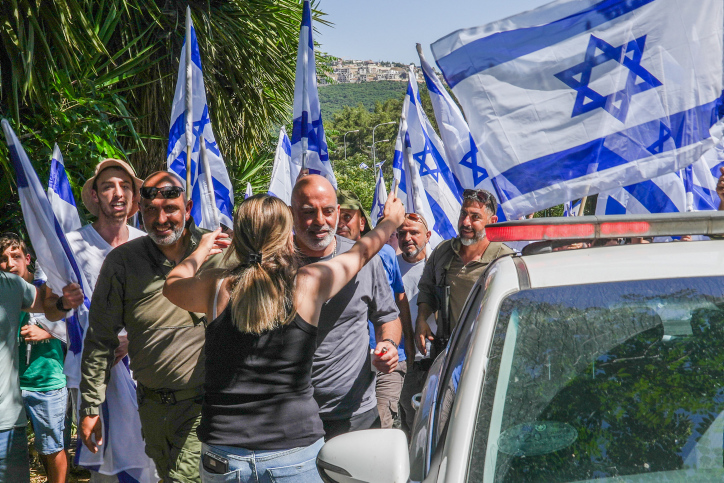


























Correction: Three Jews were not murdered in the internecine violence. Two Arab citizens and one Jewish citizen were murdered.